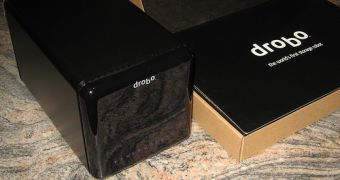An increase in storage capacity is never shunned and collectors of virtual data files will be especially pleased to hear that Drobo developer Data Robotics stated, at the launch of the European Online store last week, that it expected hard drive capacity to reach 3TB by April. Dr. Geoff Barrall explained that he expected Drobo to already be carrying such hard drives by then. Given the fact that he is the CEO, he probably knows what he's talking about, which is all the more reason for anticipation.
Currently, Drobo devices employ hard drive units manufactured by Western Digital. This could mean that WD will be the one to develop 3TB memory possibilities. The current drive used in Drobo products from WD is the Caviar Black 2TB 3.5-inch SATA drive, which was announced in early September. It has four platters of 500GB each.
Now, in order to reach 3TB, a four-platter hard drive would have to develop an areal density of 750GB per platter. This means a 50% increase compared with the Caviar Black. Not only this, but there are already drives that can definitely match the density of the Caviar, such as Seagate's Momentus, which pushes 400Gbit/sq inch and Toshiba's MK6465GSX 2.5-inch unit. The latter offers no less than 640GB on only two platters, which gives it 528.5 Gbit/sq inch in density, humbling WD's product.
WD does have a high-storage drive of its own, though, namely the Scorpie Blue 2.5 incher, which runs at 5400rpm and has 640GB spread over two platters, giving it areal density levels on par with Toshiba's product, unless it uses more of the platter's total surface.
The 3TB goal might be achievable by WD if the developers somehow manage to incorporate the density of its 2.5-inch drives into the 3.5 inchers, providing the required 500Gbit/sq inch density needed to reach the 750GB/platter capacity. The current Caviar spins at 7200rpm, though, so that probably won't happen, although if the areal density can be implemented, then 3TB is feasible, even if the rotary speed will have to be reduced.

 14 DAY TRIAL //
14 DAY TRIAL //